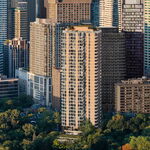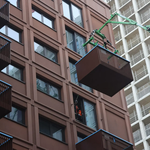Berlin
New Member
As long as Bondfield is not hired to do any of this work we may have a subway line by 2030. I think we can all agree with that.
I can see fare by distance via Presto and I certainly think most Torontonians would view it as reasonable. Obviously charging per km is absurd but charging by a few km blocks of travel is doable. A example would be 1 to 10km $2.50, 10 to 20km $3.25, and more than 20km $4 whether by bus, streetcar, LRT, subway or RER within the 416. The standard fare must be 20km because it allows people to get from their homes, no matter where in Toronto they are, to the Union/Bloor &Yonge. It would be the same fare as it is today from people going from Malvern to downtown but crosstown travel {ie Malvern to Lakeshore RER or Humber to River Rouge} would pay the extra fare and those on shorter trip would pay less.
In order for any fare-by-distance system to be politically palatable, it must be presented that your trip to downtown will either go down or at least stay the same.
Fare zones could be problematic in a city like Toronto. Vancouver has zones {although no longer with buses as all buses are one zone but may require an up zone to take SkyTrain} but Vancouver is geographically very different. There are relatively few bus routes that cross zones and the zones are very identifiably due to most being simply due to water bodies making up most of the zone boundaries. In Toronto there are a plethora of routes that cross the city and so it would be difficult for people to know what zone they are in as well as being a logistical nightmare.
I think a very BASIC fare by distance is the way to go.
I'm assuming that you don't live at McCowan and Sheppard and work at STC.Cross over the 401, 427 or DVP, a different fare. See, I just made it simple.
I'm assuming that you don't live at McCowan and Sheppard and work at STC.
Isn't that what fare-by-distance is meant to solve.That is how fare zones work. Some get screwed, others are lucky. When YRT had a fare zone system, I am sure some were pissed off at it too.




